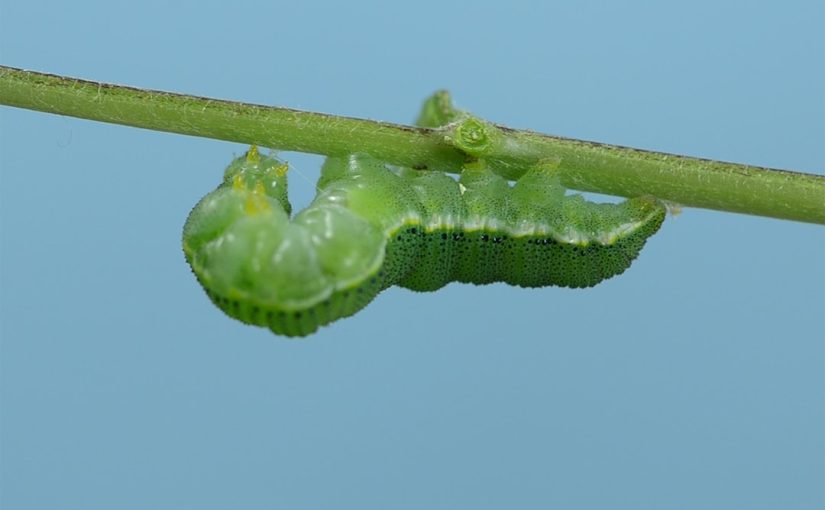For many gardeners, the sight of a caterpillar can evoke a sense of dread, conjuring images of defoliated plants and ruined harvests. Often perceived as mere pests, these fascinating creatures are frequently targeted for removal or eradication. However, adopting such a perspective means overlooking a crucial truth: caterpillars are far more than just plant munchers. They play a surprisingly vital and multifaceted role in fostering a thriving, balanced garden ecosystem. Understanding their ecological contributions can transform your approach to garden management, shifting from a mindset of control to one of coexistence and appreciation. This article will delve into the often-underestimated benefits that caterpillars bring to your green space, revealing why embracing their presence can lead to a healthier, more vibrant garden.
A cornerstone of the food web
Perhaps the most significant ecological benefit caterpillars offer is their role as a fundamental food source for a vast array of garden wildlife. They are miniature protein packets, essential for the survival and breeding success of numerous bird species, particularly during nesting season. Adult birds, like chickadees, warblers, and wrens, rely heavily on caterpillars to feed their hungry chicks, which require soft, nutrient-rich insects for rapid growth. A single clutch of chickadees, for instance, can consume thousands of caterpillars over a few weeks. Without this abundant food supply, many avian populations would struggle to thrive, leading to a noticeable decline in garden biodiversity. Beyond birds, caterpillars also serve as sustenance for beneficial insects such as predatory wasps, beetles, and even spiders, creating a natural pest control system within your garden.
To illustrate the critical demand for caterpillars, consider the following data:
| Bird species | Estimated caterpillars needed (chick rearing) | Primary ecological benefit |
|---|---|---|
| Black-capped chickadee | 6,000-9,000 per clutch | Natural pest control, seed dispersal |
| Carolina wren | Thousands per breeding season | Insectivorous, garden sanitation |
| American robin | Hundreds per day | Soil aeration, broader insect control |
| Indigo bunting | Thousands, especially early instar larvae | Pollination (as adults), insectivorous |
This dependency highlights how a garden rich in diverse caterpillar populations directly supports a healthy, vibrant bird population, which in turn helps manage other garden pests naturally, reducing the need for chemical interventions.
Pollinators in training
While caterpillars themselves are not typically recognized as pollinators, their adult forms – butterflies and moths – are crucial contributors to plant reproduction. Every caterpillar eventually transforms into a butterfly or moth, many of which are vital pollinators for a wide range of flowering plants, including vegetables, fruits, and ornamental flowers. By allowing caterpillars to complete their life cycle in your garden, you are essentially cultivating future pollinators. Planting native host plants for specific caterpillar species not only provides food for their larval stage but also ensures a steady supply of adult pollinators for your garden. For example, Monarch butterfly caterpillars feed exclusively on milkweed, and by supporting them, you contribute directly to the population of these iconic and effective pollinators.
Indicators of a thriving ecosystem
The presence of a diverse array of caterpillars often signals a healthy and well-balanced garden ecosystem. Caterpillars are specialized feeders, meaning many species will only eat specific types of plants. A garden that supports a variety of caterpillar species indicates a rich diversity of plant life and a lack of harsh chemical pesticides that would otherwise wipe out these delicate creatures. When you observe different caterpillars munching on various plants, it suggests that your garden provides the necessary resources for a complex food web to flourish. This biological diversity makes your garden more resilient to diseases and pest outbreaks, as a greater variety of organisms means a more stable system, less susceptible to being dominated by a single problem species.
Nature’s tiny decomposers and soil improvers
Beyond their roles in the food web and future pollination, caterpillars also contribute to soil health in subtle yet significant ways. As they feed on leaves, they break down plant material into smaller pieces, which then fall to the ground. Their frass, or excrement, is essentially nutrient-rich organic matter that acts as a natural fertilizer, enriching the soil with essential nutrients and beneficial microorganisms. This natural decomposition process helps to return vital nutrients to the soil more quickly than if the plant matter were to decompose on its own. Furthermore, the act of their feeding and subsequent frass deposition stimulates microbial activity in the soil, enhancing its structure and overall fertility. This continuous cycle of consumption and decomposition contributes to a living, breathing soil environment that supports healthier plant growth from the ground up.
Far from being mere destructive pests, caterpillars are integral to the health and vitality of a flourishing garden ecosystem. We’ve explored how they serve as a critical food source, sustaining bird populations and beneficial insects, thus maintaining a natural balance. Furthermore, by supporting caterpillars, we are directly fostering future pollinators—butterflies and moths—who play an undeniable role in plant reproduction. Their very presence acts as an ecological barometer, signaling a diverse and chemical-free environment. Finally, their often-overlooked contributions to soil health through decomposition and nutrient cycling reinforce their value. Shifting our perspective to embrace caterpillars means nurturing a more resilient, biodiverse, and naturally vibrant garden. By choosing native plants and minimizing pesticide use, you can welcome these tiny dynamos, allowing them to perform their essential ecological duties and transform your garden into a truly thriving habitat.
Image by: Bankim Desai
